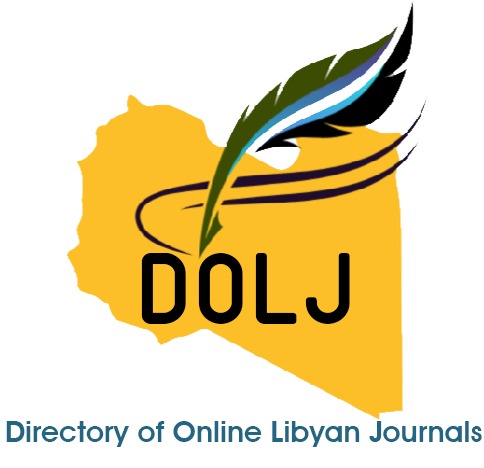Endodontic Retreatment Awareness, Challenges and Practices among Libyan Dentists: A Survey-Based Study
Abstract
Non-surgical endodontic retreatment is generally the preferred method for managing post-treatment disease. Its success rate is considered favourable especially with the introduction of advanced techniques and materials. However, treatment planning and practices may vary between specialists and general practitioners, influenced by their educational background, clinical experience, attitudes, and available resources. The aim of this study was to gather information on the awareness, attitudes, techniques, and materials used in non-surgical endodontic retreatment (NSER) among Libyan dentists. A questionnaire related to endodontic retreatment was distributed randomly via various social media platforms. The survey was structured into two sections: the first part: which included demographic details, and the second part: which consisted of a series of questions designed to assess the trends, techniques, materials, and opinion of dentists regarding endodontic retreatment. Data was gathered and statistically analyzed using SPSS version 25. Descriptive statistics were calculated to determine frequencies and percentages for each survey item. Additionally, chi-square tests were conducted to identify significant differences in practices based on speciality and other demographic factors. Out of 102 respondents, 16% were en-dodontists (ENs), 63% were general practitioners (GDs) and 21% were dentists from other speciality with a female predominance (79%). Persistent infection was reported as the most common cause of failed endodontic treatment. Most dentists felt that managing complications such as perforations and ledges is the most challenges face of retreatment. The most significant finding was in rubber dam usage among the dental specialties with p-value of (P = 0.002). Almost all practitioners apply both hand and rotary files for removal of old fillings. Respectively, sodium hypochlorite and calcium hydroxide were the preferred choices for irrigation and intracanal medicament. However, ENs utilize higher concentration of sodium hypochlorite. Cold lateral compaction technique was the most commonly used method for obturation. In conclusion: it has been found that although there are some variations in the trends of endodontic re-treatment practices between Endodontists (ENs) and other dentists, it can be asserted that Libyan general dentists, endodontists, and dentists from other specialties demonstrate a sufficient level of awareness and adhere to similar protocols in managing retreatment cases.
إن إعادة العلاج اللبي غير الجراحي هو بشكل عام الطريقة المفضلة لإدارة مرض ما بعد العلاج. ويعتبر معدل نجاحه مواتياً خاصة مع إدخال التقنيات والمواد المتقدمة. ومع ذلك، قد تختلف خطط العلاج والممارسات بين المتخصصين والأطباء العامين، متأثرة بخلفيتهم التعليمية وخبرتهم السريرية ومواقفهم والموارد المتاحة. كان الهدف من هذه الدراسة جمع المعلومات حول الوعي والمواقف والتقنيات والمواد المستخدمة في إعادة العلاج اللبي غير الجراحي بين أطباء الأسنان الليبيين. تم توزيع استبيان يتعلق بإعادة العلاج اللبي بشكل عشوائي عبر منصات التواصل الاجتماعي المختلفة. تم تنظيم الاستطلاع في قسمين: الجزء الأول: والذي تضمن تفاصيل ديموغرافية، والجزء الثاني: والذي يتكون من سلسلة من الأسئلة المصممة لتقييم اتجاهات وتقنيات ومواد وآراء أطباء الأسنان فيما يتعلق بإعادة العلاج اللبي. تم جمع البيانات وتحليلها إحصائيًا باستخدام برنامج SPSS الإصدار 25. تم حساب الإحصائيات الوصفية لتحديد الترددات والنسب المئوية لكل عنصر من عناصر الاستطلاع. بالإضافة إلى ذلك، تم إجراء اختبارات مربع كاي لتحديد الاختلافات الكبيرة في الممارسات على أساس التخصص والعوامل الديموغرافية الأخرى. من بين 102 من المستجيبين، كان 16٪ من أطباء لب الأسنان (ENs)، و63٪ من الممارسين العامين (GDs) و21٪ من أطباء الأسنان من تخصص آخر مع غلبة الإناث (79٪). تم الإبلاغ عن العدوى المستمرة باعتبارها السبب الأكثر شيوعًا لفشل علاج لب الأسنان. شعر معظم أطباء الأسنان أن إدارة المضاعفات مثل الثقوب والحواف هي أكثر التحديات التي تواجه إعادة العلاج. كان الاكتشاف الأكثر أهمية في استخدام السد المطاطي بين التخصصات السنية بقيمة p (P = 0.002). يستخدم جميع الممارسين تقريبًا كل من الملفات اليدوية والدوارة لإزالة الحشوات القديمة. على التوالي، كان هيبوكلوريت الصوديوم وهيدروكسيد الكالسيوم الخيارين المفضلين للري والأدوية داخل القناة. ومع ذلك، يستخدم أطباء لب الأسنان تركيزًا أعلى من هيبوكلوريت الصوديوم. كانت تقنية الضغط الجانبي البارد هي الطريقة الأكثر استخدامًا للحشو. وفي الختام: لقد وجد أنه على الرغم من وجود بعض الاختلافات في اتجاهات ممارسات إعادة علاج لب الأسنان بين أطباء لب الأسنان وأطباء الأسنان الآخرين، إلا أنه يمكن التأكيد على أن أطباء الأسنان العامين وأطباء لب الأسنان وأطباء الأسنان الليبيين من تخصصات أخرى يظهرون مستوى كافياً من الوعي ويلتزمون ببروتوكولات مماثلة في إدارة حالات إعادة العلاج











